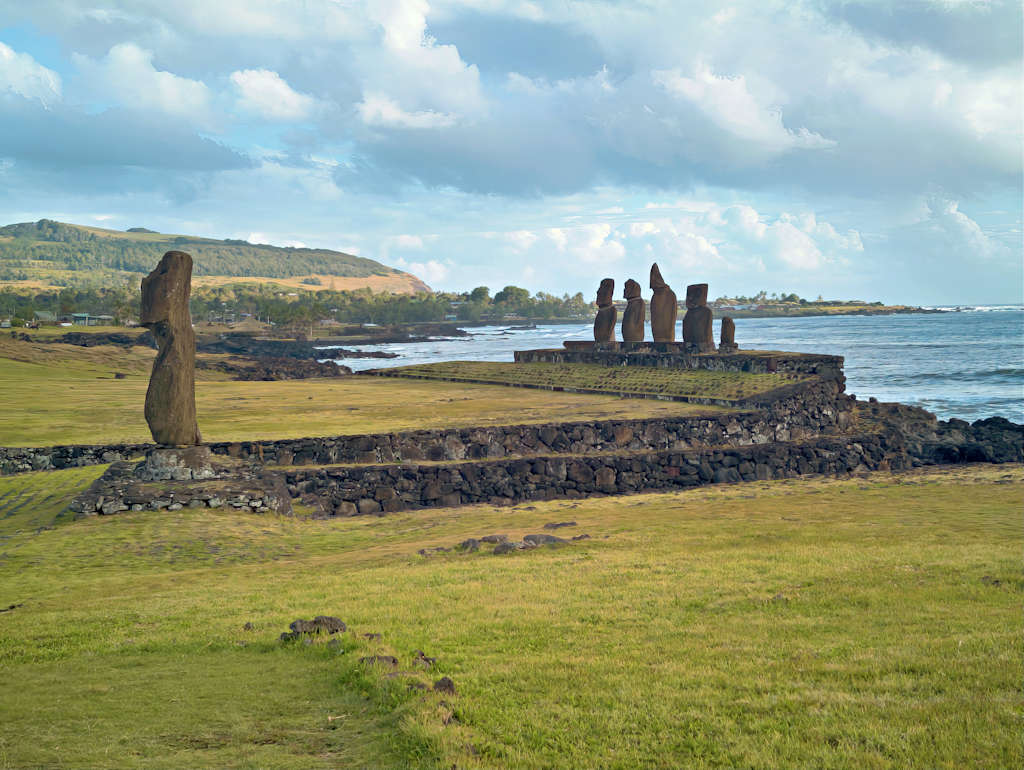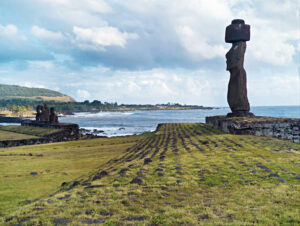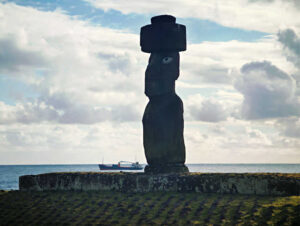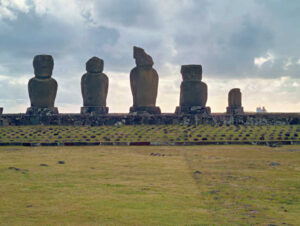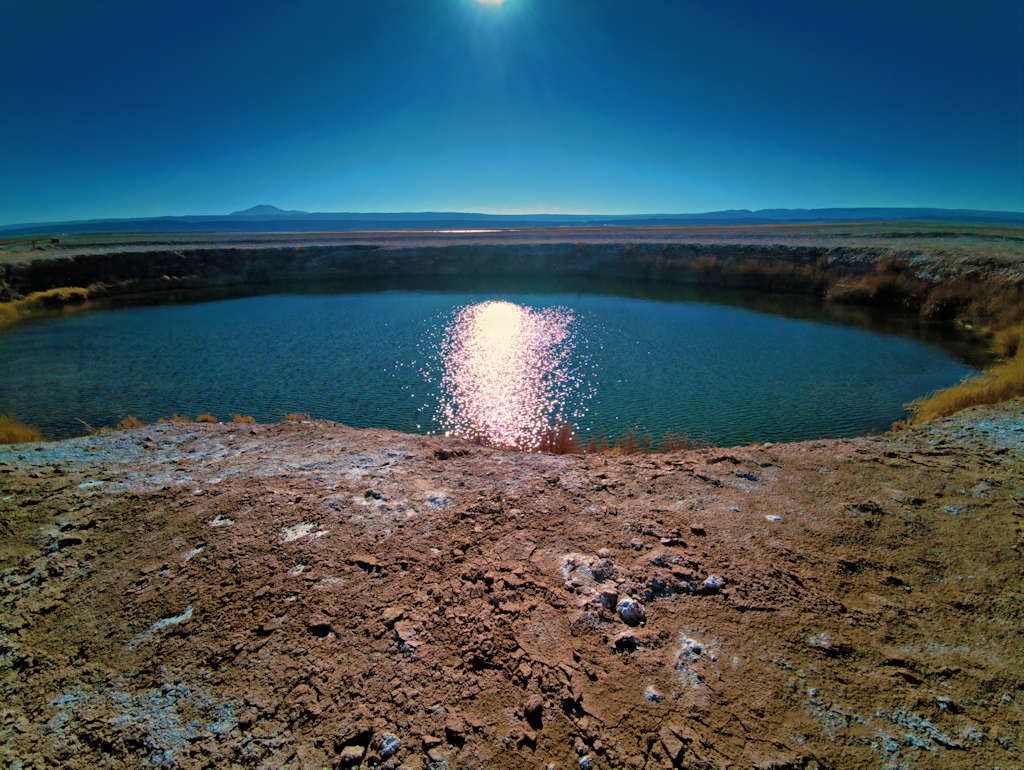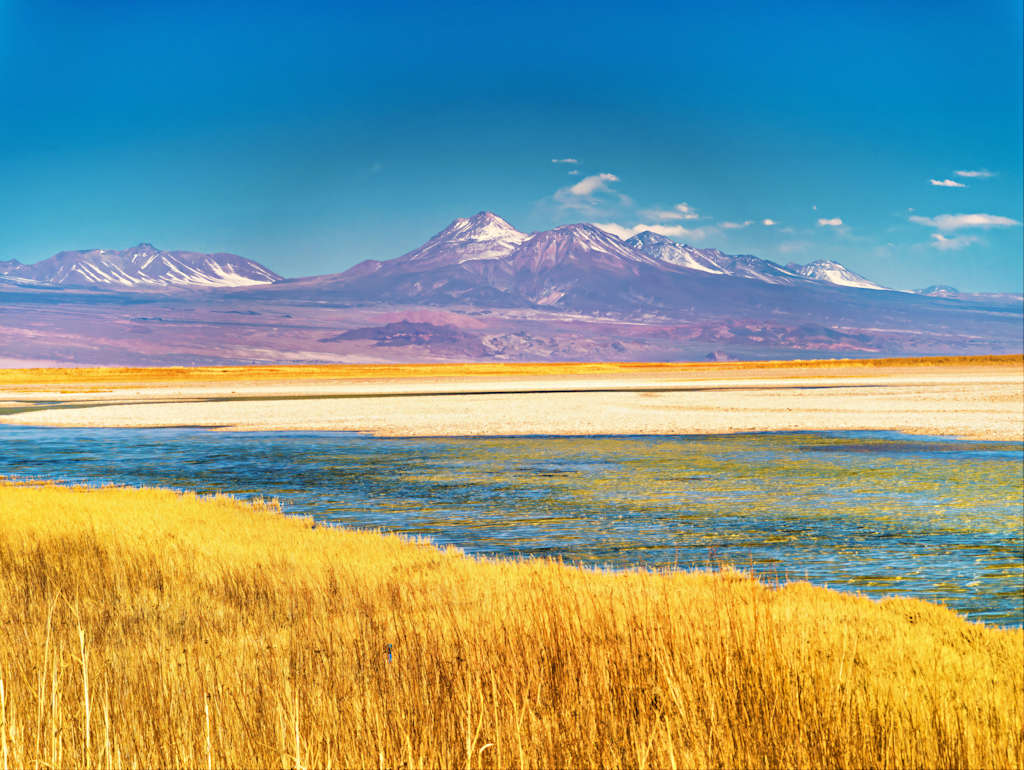Walking to the Moai at Ahu Tahai: The Most Accessible Moai on Easter Island, Chile - interactive 360-degree video
If you are viewing this on a mobile device, please turn to LANDSCAPE position. Drag the view on the screen with your finger (or move the device around) and you will see everything all around you – even what’s behind or on the ground. Viewing on a PC? Use the mouse to drag the view anywhere you want to see. If you have a VR viewer (goggles) you will be fully immersed. Better than IMAX! SUGGESTION: see the video again, change the viewing angles. You will discover new things!
IMPORTANT! Please click on the "Watch on YouTube" link for best viewing. The embedded small screen is inadequate for interactive 360 degree videos.
To see the same video in conventional screen format (non 360-degree video)
click here
360 preference survey
- If you’d like to research or purchase a 360-degree camera, here’s a link to a 360-degree camera like the one I used to produce my videos. I have nothing but good things to say about my camera (which I purchased from the same website as the link above).
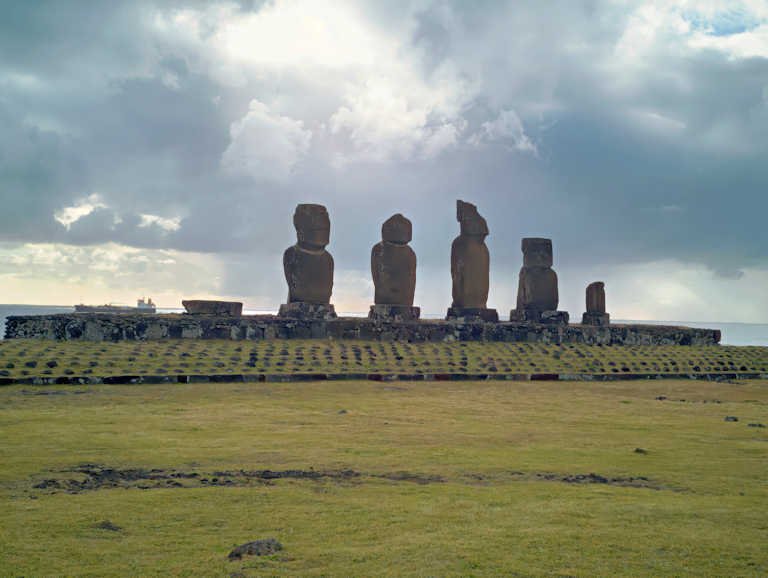
Ahu Tahai: The Living Faces of Rapa Nui’s Past
- The Ahu Tahai archaeological complex, located just outside of the main town of Hanga Roa on Rapa Nui (Easter Island), is one of the island’s most evocative and accessible sites. It provides a stunning, tangible link to the island’s ancient past and is particularly famous for its spectacular sunset views.
- The Moai statues represent the ancestors of the Rapa Nui and played a significant role in their religious and social beliefs. The exact origins of the Moai can be traced back to the late 13th century, a period characterized by the rise of the Rapa Nui civilization which thrived on this remote island in the Pacific Ocean.
- Constructed from volcanic tuff, the Moai are often associated with the concept of ‘mana,’ which refers to a spiritual power believed to be imbued in ancestors. The Rapa Nui believed that the presence of these ancestral figures conferred blessings and protection upon their communities.
- Moai statues were typically placed on stone platforms, known as Ahu, which served as both tombs and places of worship.
- They represent the deified ancestors (aringa ora ata tepuna) of the Rapa Nui people, serving as the “living faces” (aringa ora) of the past who watched over the community’s lands, with their backs to the sea and faces turned inland.

The Three Platforms of Tahai
- Ahu Tahai is not a single ceremonial platform but a collection of three ahu (stone platforms) along the coast, each hosting a unique arrangement of moai (monolithic human figures).
- Ahu Vai Uri: This is the most impressive group, featuring a line of five restored moai of varying sizes, standing together on a single platform.
- Ahu Tahai: Located in the center, this platform holds a single, solitary, and heavily eroded moai which is one of the oldest in the complex, with the platform dating back to around 700 AD.
- Ahu Ko Te Riku: This ahu is the most distinguishing of the group as it features the only moai on the island with a fully restored pukao (topknot or T’hat’) and eyes.
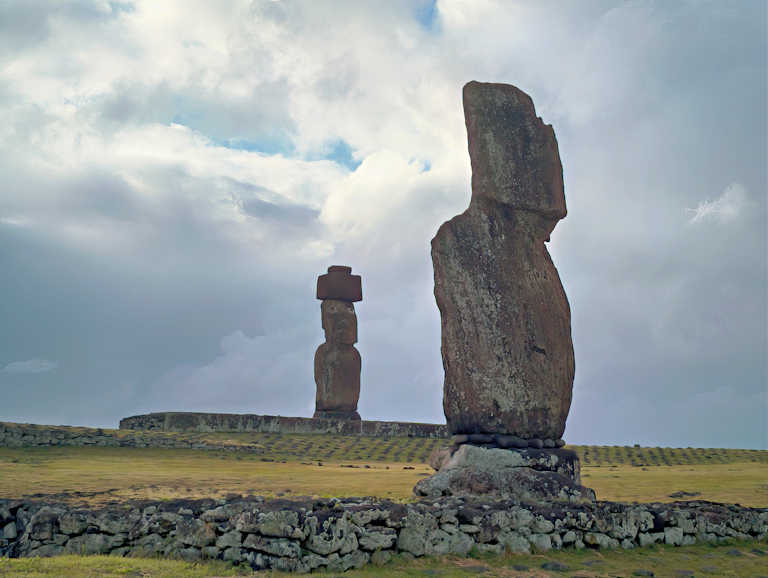

Ahu Tahai: Unique and Interesting Features
- The moai at Ahu Tahai embody several fascinating characteristics of Rapa Nui’s monumental sculpture tradition:
- The Restored Eyes: The moai at Ahu Ko Te Riku is especially significant because it is the single example on the entire island where the statues’ white coral eyes have been fully reconstructed. The eye-carving was an ancient ceremonial ritual, and the insertion of the coral eyes, with pupils of red scoria (volcanic stone), was the final act that symbolically animated the statue, transforming it from a mere stone figure into the living face of the ancestor.
- Pukao (Topknots): The Ahu Ko Te Riku moai also wears a restored pukao, a large, cylindrical stone adornment made of red scoria quarried from the Puna Pau volcano. These topknots are believed to represent a topknot of hair—a traditional hairstyle associated with high rank, power, and mana (spiritual power) in Polynesian culture—and were added in later periods of statue construction.
- The Restoration Effort: The current restored state of the ahu and moai at Tahai is largely thanks to the American archaeologist William Mulloy, who led the massive restoration project in the 1960s. Prior to this work, like nearly all moai on the island, these statues had been toppled, likely during periods of internal tribal conflict or upheaval in the late 18th and early 19th centuries. The process of re-erection for such massive stones, weighing many tons, remains a remarkable feat of engineering.
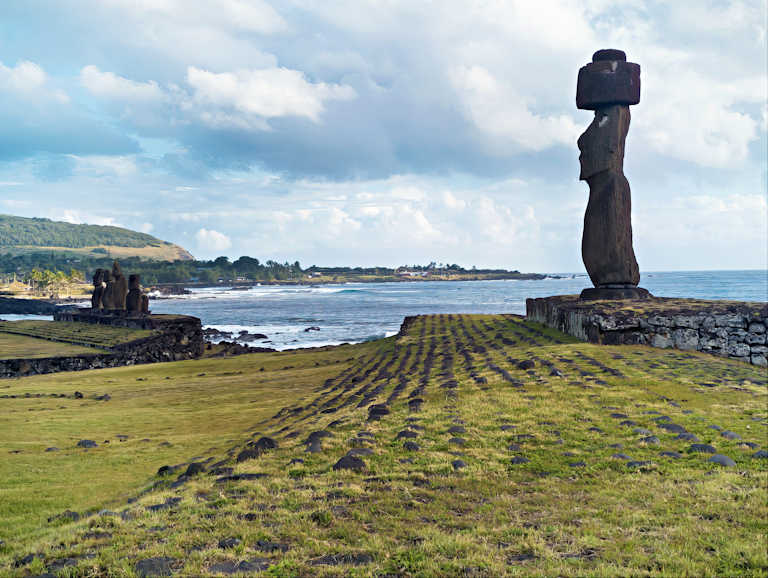
Visiting Ahu Tahai: Practical Information and Tips
- The complex is located on the western coast, just a short 15-20 minute walk north of the central area of Hanga Roa. Its proximity to town makes it easily accessible on foot. Although a National Park ticket is required for all island visitors, at the time of my visit there was no ticket check. Anyone can walk from Hanga Roa and visit these Moai. Remember to stay within clearly marked visiting paths. There is no way to get a close look as the path boundaries are far from the statues.
- Late afternoons around sunset are a good time to visit for some potentially good sunset shots, but that will also put the light behind the statues, which means you will mainly see silhouettes.
- A bonus to visiting this site at sundown is its proximity to the the traditional fishing village of Hanga Roa, with numerous dining options. You are sure to find a place that serves great seafood. However, be prepared for an expensive meal, as all these restaurants operate strictly for the tourists that inject cash into the local economy.
- Between the Moai and the fishing village, there is a small modern art display built by local artists called: “Monument to the Universal Language” or simply “The Circle of Peace”. It is a circle of basalt stones, each carved with symbols and petroglyphs representing different cultures and belief systems from around the world, as well as Rapa Nui motifs like the birdman (tangata manu). The aim of the work by modern artists is to create a universal dialogue and symbol of global unity. Here a beautifully worded tablet from this statuary display:

Download full-size master image files
Please use our images!
Your purchase is important to us!
- The financial reward is important. The moral boost we receive when someone cares enough to click that “ADD TO CART” button: priceless! Thanks!
- You may use the downloaded images as wallpaper, in a slide show, or to supplement your collection of images from a location you care about. Other possible use cases: a research paper, newsletter or personal website.
- The size of our master photo files is no less than 7952 x 5304,.JPEG, with very light compression. The photos taken during a 360 degree shoot (featured on a blog page that includes a 360 degree video) are taken in RAW format, with a phone camera. The RAW file is “developed” and processed with advanced software, including increasing the resolution with AI and AI upscaling. The resulting large format file is then polished for its final creative look.
Conditions of use for downloaded images:
- Downloading an image at listed price does not provide ownership of the image (we retain copyright). It provides a license for limited use and distribution of the downloaded image.
- Distribution is limited to 50,000 exposures or copies and for projects with a total budget of $5,000 or less. No billboards or magazine covers.
- May be used only with attribution as follows:
-
- © Photography by Cristian Coban, visit
whatsitliketovisit.com
- Any image or video purchased or copied from our website may NOT be used for resale, download or redownload, distribution or redistribution, or any other further commercial use.
- We accommodate larger projects and distribution at industry competitive rates. Please Contact us with details of your project and we will be happy provide a quote.

